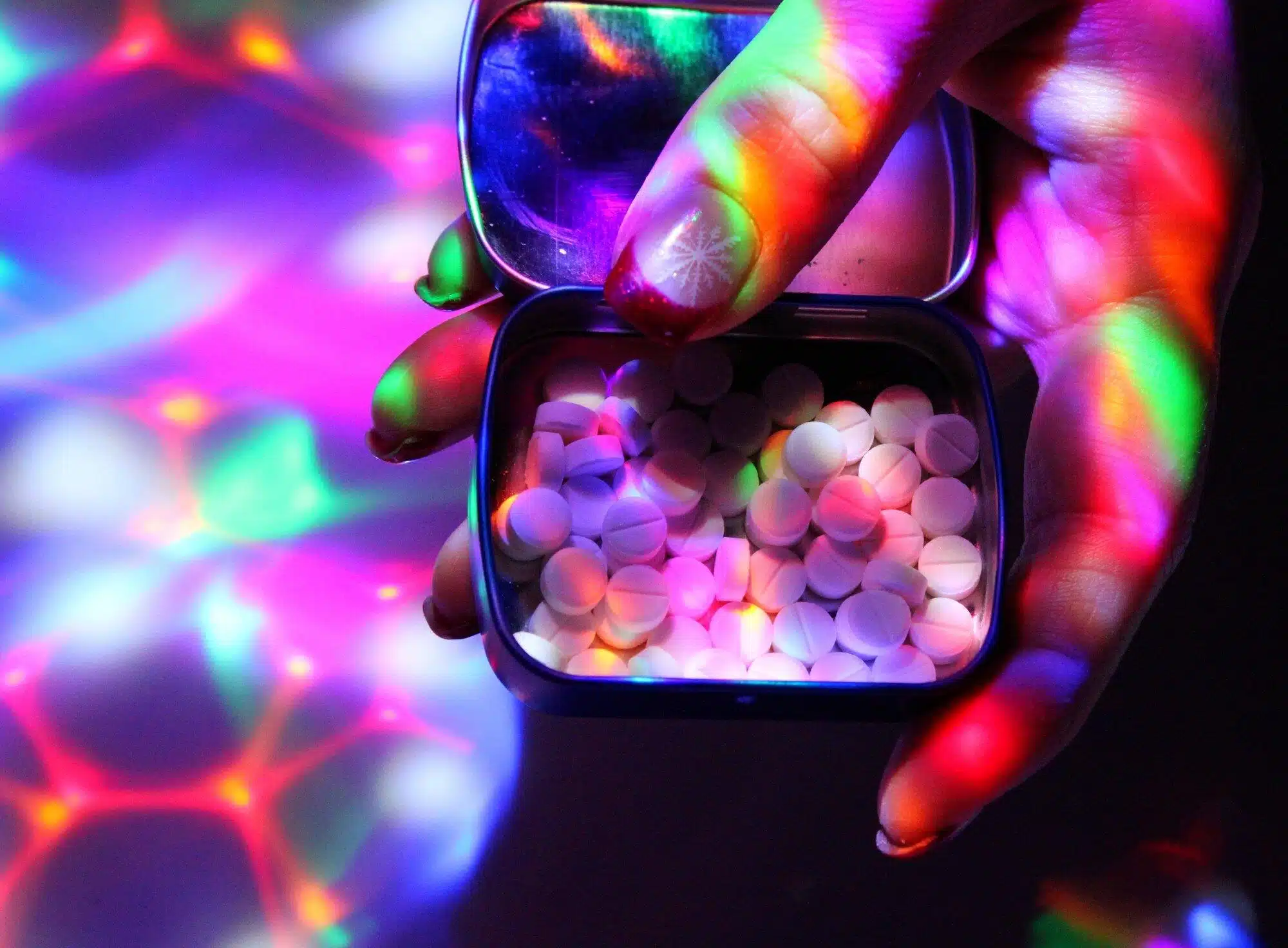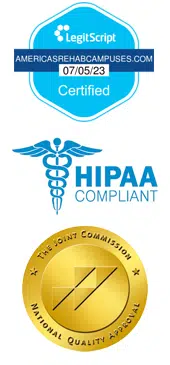 Beyond the High: Understanding the Long-Term Effects of Ecstasy
Beyond the High: Understanding the Long-Term Effects of Ecstasy
The most recent National Survey on Drug Use and Health shows that in the US alone, approximately 2.2 million people over 12 reported using ecstasy in the past year. People use ecstasy to enhance relationships and feel longer periods of happiness during social events.
While ecstasy is often considered the “safer choice” of illegal drugs, there are long-term impacts that many people aren’t aware of. Learning the long-term effects of ecstasy can help you decrease health risks by taking steps to stop using it altogether.
Read on to learn everything you need to know about the long-term effects of ecstasy and where to find addiction treatment.
Overview of Ecstasy
Ecstasy, or MDMA (short for the chemical name methylenedioxy-methamphetamine), is a synthetic drug that increases energy levels as well as positive and emotional feelings toward other people.
You’ll also hear of ecstasy referred to as E, X, XTC, molly, peace, disco biscuit, or lover’s speed. Ecstasy was initially made by a German pharmaceutical company in 1912 as one of its compounds held a potential treatment for uterine bleeding. Later, it was used in various experiments in the US during the 1950s.
How Does Ecstasy Affect Your Brain and Body?
Many people use ecstasy as a “party drug” since it elevates mood by affecting dopamine levels. Dopamine is a neurotransmitter in your brain and is known as the “feel-good chemical.” It plays a critical role in motivation, attention, mood, memory, and movement.
While MDMA can be useful for PTSD treatment in clinical settings, there aren’t any safety standards in place for recreational use. Therefore, it can have more severe impacts on the mind and body.
Ecstasy also increases your blood pressure and heart rate, causing you to feel much more energized overall. This is because it also impacts other neurotransmitters like norepinephrine, which controls your body’s “fight-or-flight” response.
Risks of Ecstasy Use
Overall, ecstasy has both stimulant and hallucinogenic effects on the body which can lead to ecstasy misuse. In addition, since ecstasy is usually made illegally in labs, it can often be cut with other ingredients.
Many times these other ingredients are dangerous drugs like cocaine or heroin, and only increase the potential for addiction as well as cause you to feel higher.
In most cases, ecstasy comes in tablet or capsule form, but you can also find it as a liquid, and some people also smoke it.
What Happens After You Take Ecstasy?
When you take ecstasy, your brain is flooded with dopamine within 15 to 30 minutes after taking it.
You’ll feel high and energized, which increases feelings of well-being and self-awareness. You’ll also feel more emotional warmth towards people and be more willing to discuss memories. It also makes socializing much easier, especially if you suffer from social anxiety issues.
These effects can last up to three hours but then start to wear off. Many people will take another dose once the effects begin to fade.
Long-Term Effects of Ecstasy
While occasional recreational MDMA use may not have as many effects, continuing to use ecstasy will start to cause longer-term effects as soon as a week or two after using ecstasy moderately.
This is especially the case with recreational use since the dosages aren’t regulated and are more likely to be mixed with other drugs.
Initially, it’s common to experience anxiety, depression, irritability, and problems sleeping normally. MDMA can also cause higher body temperature since ecstasy use increases physical activity levels.
As this continues, you put yourself at risk of severe dehydration, which can lead to low electrolyte levels and kidney problems.
It also causes other side effects on the body that include:
Heart Effects
Using MDMA can significantly impact your heart health over time. Ecstasy affects your cardiovascular system by increasing blood pressure and heart rate. However, it can also impact your heart beyond these increases.
While occasional increased blood pressure and heart rate won’t cause issues, heavy chronic MDMA use can cause problems, especially if you have a preexisting heart condition.
First, using ecstasy can cause the heart to pump incorrectly, staying in a relaxed state for too long. Ultimately this can lead to heart failure since it isn’t able to pump enough blood to allow for normal body functions.
It can also cause irregularities in your heart rate, known as arrhythmias. Usually, they’re brief, but people often feel symptoms of a racing heart. Mild arrhythmias don’t usually cause serious health effects, but using MDMA can cause them to worsen, leading to strokes and heart failure.
Long-term ecstasy use can also contribute to valvular heart disease, which involves how your heart valves operate. It can also cause weakening of the ventricles.
Keep in mind that serious heart effects are rare and more likely if you already have heart issues.
Brain Effects
Remember, even short-term MDMA use increases the brain’s neurotransmitter activity, specifically dopamine. However, it also causes more serotonin and norepinephrine to be released. Serotonin is a neurotransmitter that regulates functions like sleep, pain, mood, and appetite.
Because MDMA causes more of these neurotransmitters to be released, it can leave the brain depleted long-term. Studies show this long-term use causes brain impacts like memory loss, confusion, anxiety, paranoia, depression, and decreased cognitive function.
If you already have existing depression or anxiety, using ecstasy can make these symptoms worse. In fact, people with substance use disorders also tend to suffer from mental health conditions, which can ultimately worsen the cycle of use.
For this reason, treatment programs include individual behavioral therapy to treat co-occurring mental health disorders. This is because negative thought patterns can lead to addiction.
Addiction Potential
While MDMA can be used therapeutically, it may well also lead to addiction. This is because ecstasy is a stimulant that impacts the brain and body.
MDMA use disorder involves tolerance to MDMA, meaning you need more and more to get the same effects as you had when you first started using. You become used to having MDMA in your system, and your body gets more dependent on it to function normally.
Due to this, once you stop taking MDMA, you can experience certain withdrawal symptoms like depression, memory problems, and cravings. Many people also miss the euphoric feeling using ecstasy brings and have a difficult time stopping use completely on their own.
Although the addiction potential isn’t as strong with MDMA as it is with other drugs like cocaine, the potential is there with regular use.
Addiction Treatment for Ecstasy Use
If you’ve been using ecstasy long-term, it’s essential to get the help you need to stop using it. Breaking the cycle is key to addiction treatment and focusing on specific steps of treatment can help you do just that.
Medical Detox
If you’ve been using MDMA for a long time, it can be difficult to quit cold turkey since your body adjusts to having it in your system. In addition, if you use ecstasy mixed with other drugs, you may experience increased withdrawal symptoms.
Medical detox is the first stage of treatment and includes the use of medications to help reduce withdrawal symptoms like anxiety, depression, and nausea. You’ll also receive 24/7 staff support during detox.
You’ll have a custom detox plan that focuses on your history of use and the current symptoms you’re experiencing. You’ll also be prepared for the next phases of treatment.
Inpatient Residential Treatment
Residential treatment programs offer the most intense and effective treatment you can receive. You’ll live at the facility during treatment which allows you to step away from your usual environment, preventing access to drugs or alcohol.
You’ll have the opportunity to form a new healthy routine while learning skills that help you decrease stress and avoid relapse.
Treatment includes various therapies like:
- Cognitive behavioral therapy
- Family therapy
- Medication maintenance
- Recreational therapies
- Dual diagnosis treatment for mental health disorders
You’ll also learn career and life skills to help you stabilize your life after treatment.
Other Treatment Programs
Other programs include partial hospitalization (PHP) and intensive outpatient treatment (IOP).
PHPs are a step down from inpatient treatment but still offer the structure you need to continue recovering. PHP allows you to live at home while attending treatment each day. PHP is good if you have a stable home environment and don’t need constant support.
IOP programs are the least intensive, meeting three days per week for three hours daily. It’s the most flexible, allowing you the freedom to live at home and work, and strengthens your ability to cope with living sober.
Begin a Substance Use Treatment Program Today
Understanding the long-term effects of ecstasy will help you better understand your risks.
You can turn to America’s Rehab Campuses in Tucson, Arizona for your individualized treatment needs. Our new Tucson facility opened in 2017 and we’re committed to offering a full range of recovery care options in one location.
We offer various treatment programs like medical detox, residential treatment, partial hospitalization, and intensive outpatient treatment programs. Our holistic approach focuses on physical, mental, and emotional well-being along with a custom treatment plan that meets your recovery needs.
We accept Arizona Health Care Cost Containment System (AHCCCS) plans along with private PPO and HMO insurance. In addition, we’re willing to work with you financially, offering competitive fees if you need to pay cash.
Contact us today to learn more about our treatment options and start moving toward recovery.

